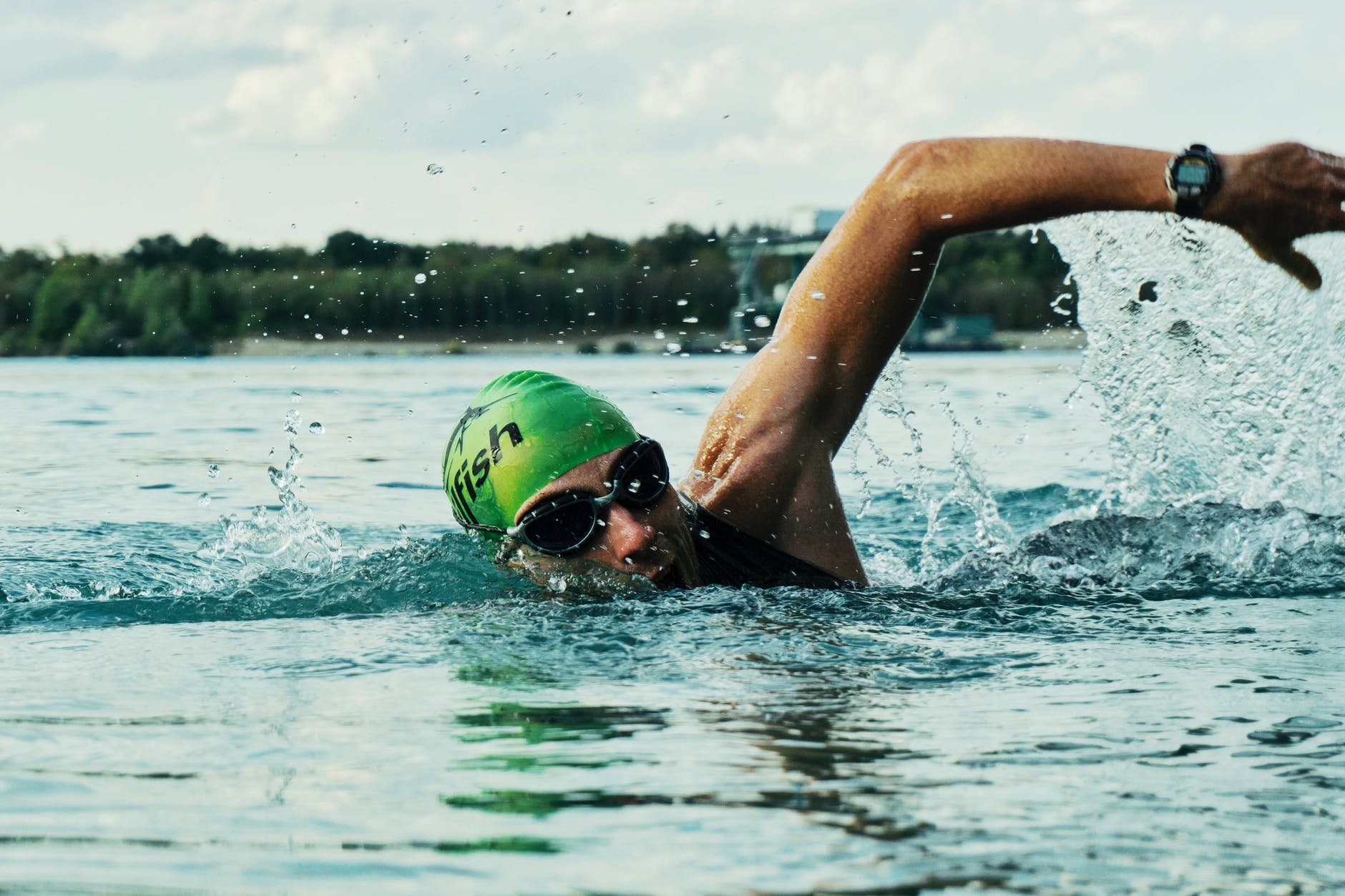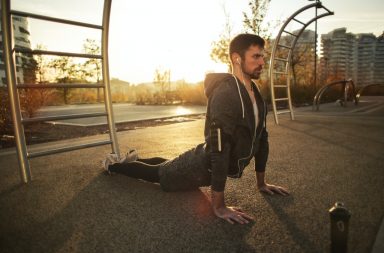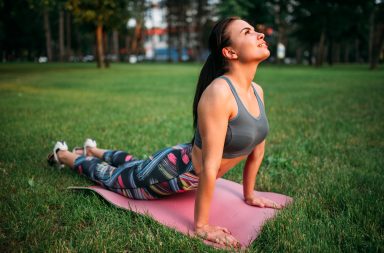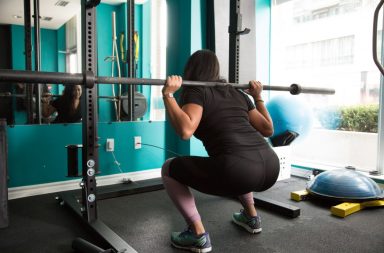Dynamic stretches for swimmers are important. Have you ever wondered why doing a warm-up before you start swimming is such a big deal?
It is tempting to simply jump into the water, especially when you’re pressed for time. However, swimming without a warm-up could lead to muscle injuries. Just as you would do a warm-up before any other exercise, you need to warm your body up before swimming.
Doing dynamic stretching exercises is a great way to do this and it can also boost your swimming performance. Here are the top 10 dynamic stretches for swimmers. But first, let’s take a look at why swimming makes the perfect exercise.

Photocredit: Retha Ferguson
Is Swimming Good For Losing Weight?
Swimming is one of the most popular activities around the world. One of the most appealing things about it is its multi-purpose function. You see, it works well both for recreational and also fitness purposes. Even in the fitness arena, swimming holds its own as one of the topmost exercises. So much so that it has been nicknamed “the perfect exercise”.
This nickname comes from the fact that swimming is one of the very few exercises that work on the whole body, without the strain and stress that other exercises cause. Let’s look at a few of the many benefits that swimming has on the body.
Cardiovascular: To start with, swimming is great for cardiovascular exercise. It’s an aerobic exercise which means that it helps to keep the heart and lungs healthy. What’s more, it can help to strengthen the heart muscles and increase blood flow throughout the body. When you hold your breath under the water while swimming, your lungs are trained to use oxygen more efficiently and this, over time, will lead to overall lung health.
Weight loss and control: Many of us are either trying to lose weight or maintain a currently healthy weight. Either way, this sport is a good way to achieve that aim. Depending on how regularly and vigorously you swim, you can lose a good amount of weight. Swimming for an hour burns just about as many calories as you would burn by running for the same amount of time.
Tones the muscles: One of the hardest places to lose weight is in the stomach region. For some reason, it seems that regular workouts just don’t do a good enough job of eliminating that embarrassing belly fat. Fortunately, the “perfect exercise” might be able to solve that for you. Swimming exercises your stomach muscles to help reduce belly fat. For improved results, you can try to tuck your stomach in as you swim, as though you’re trying to push your belly button against the inner wall of your back.
Endurance: Swimming regularly builds endurance, tones the muscles, and builds strength. Each of the different swimming strokes focuses on different muscles. By using different strokes in your laps, you will exercise your entire body at the end of your swimming session.
Controls blood sugar levels: There’s no conclusive research to back this, but some health experts claim that swimming may be a good way to lower blood pressure and blood sugar. More evidence is needed, but hey, what’s there to lose? Even if swimming won’t bring your blood pressure and blood sugar levels down, it certainly won’t increase them either!
Great for all ages: Certainly, swimming is an ideal exercise for almost anyone of any age. It’s a fun way to get kids to exercise, and it’s safe and friendly for old people as well. Although care needs to be taken, those with injuries can also swim quite safely, without having to worry about causing extra strain or damage. In fact, swimming may help improve and speed up recovery. This is not surprising, since swimming is quite a versatile activity; it can be as relaxed or as vigorous as you want it to be.
Improves lung capacity: Breathing exercises for swimming can help to expand the lungs and control breathing for people who suffer from asthma. Additionally, pregnant women will find swimming to be a relaxing and stress-free way to exercise, from the first trimester, through to the third.
Some added benefits of swimming are that it lowers stress and depression, it improves flexibility, coordination, posture, and balance. However, despite these amazing benefits. But you may not experience them if you do not prepare adequately before going into the pool. This is where good dynamic stretching exercises come into play. Keep reading to find out more.
SEE ALSO: Manuka Honey Benefits for Asthma

Photo Credit: Mali Maeder
Why Dynamic Stretching Helps Before Swimming
It may seem like a good idea to skip the warm-up and simply jump into the pool, particularly if you’re just swimming for fun. It’s important to remember, though, that whether you’re purposefully swimming for fitness or just swimming for fun, you are still working out a whole lot of muscles in your body. Just as it is with any other exercise, you need a good warm-up session to get you ready before you start swimming.
While there are other ways to warm up, like jogging or walking, stretching is the most ideal, because swimming itself involves stretching your muscles a whole lot. Stretching gently before swimming helps to prepare the body for more strenuous activities that lie ahead, once you go into the water. It charges up the body and eases it into the swimming session. Doing dynamic stretching exercises before swimming will equally reduce the muscle soreness that typically comes with swimming, and also reduces the risk of injuries.
But what exactly happens to your body when you stretch? First of all, stretching increases the temperature of the muscles. This is good because your muscles will contract with more force, giving you more powerful strokes and kicks, and in effect, a more efficient swimming session. Warm muscle temperature also means that the muscles will relax easily to avoid overstretching.
Stretching further increases flexibility before swimming by lengthening muscle fibres. Again, this will make you more efficient in the water. As the body gets charged up from stretching, triggers are sent to the brain to produce hormones that control the production of energy in the body. Altogether, more energy means more power and better performance while you get on with your swimming. Now, who doesn’t want that?
Swimming: Static Stretching vs Dynamic Stretching
Although stretching before swimming is good, it’s important to choose the right type of stretches. Not just any stretching exercise will do. Experts encourage swimmers to mostly perform dynamic stretching exercises. The opposite of dynamic stretching is static or cold stretching. This is where a person stands or sits motionless, holding one stretching position for an extended length of time. Standing still and stretching down to touch your toes is an example of a static stretch.
While this type of stretching can relieve some tension in the muscles, it can also make you more vulnerable to shoulder injuries and overstretched muscles. Rather, swimmers are advised to do perform stretches that work both on the muscles while moving and on the body’s full range of motion. This makes sense, considering that stretching is a warm-up to prepare the body for the activity it’s about to do.
In this case, the activity is swimming, which is basically a whole lot of movement. Ideally, everyone who swims should aim to do about 10 to 15 minutes worth of dynamic stretching, 3 to 5 minutes before any other warm-up for swimming.
10 Dynamic Stretches for Swimmers
Now you know why you should do some dynamic stretching exercises before you swim, and you also know what types of stretches to do, and those ones avoid. This next section will show you 10 easy and practical stretches that you can do before you next jump into the pool.
1. Jumping Jacks
There’s a reason why this exercise features in just about every pre-workout warm-up session. As far as dynamic stretching exercises go, it’s a simple one, but it works wonders to get your muscles ready for swimming. Doing jumping jacks will stretch out and strengthen various muscles in both your arms and your legs, at the same time. Start with your feet together, hands by your side, and palms facing your thighs. Now jump with your legs spread wide apart, and your hands going overhead, and then return to the starting position. With that in the bag, you’ll be fired up and ready to go.
2. Butt Kicks
This is another popular and easy-to-do stretching exercise. It focuses on the muscles in the lower half of the body, particularly the legs, thighs, and butt. This will help you execute stronger and more powerful kicks once you start swimming. Jog on the spot, kicking your legs backwards. Make sure you kick your legs up high enough so the heel of your foot touches your butt. Do this for about 10 minutes and don’t hesitate to take short breaks for a few seconds if necessary.
3. Trunk Rotation
Trunk rotations go a long way to strengthen your core and improve your balance. To begin, stand with your feet apart so that they are in line with your shoulders. Bend your arms slightly, as if you’re going to hook on to another person’s arm.
Now turn your body so that your whole torso and arms rotate to the right. As you do this, turn your right foot inward at the same time. Your trunk should move simultaneously with the rest of your body. When that’s done, quickly switch sides and perform the same movement on your left. Your movements should be flexible and fluid.
4. Skipping
Skipping is also a simple way to do some dynamic stretching exercises before you swim. The combined movements of jumping and swinging a rope are great for stretching both leg and arm muscles at the same time. All you have to do is find a jump rope and skip for about 2 to 4 minutes, taking short breaks if necessary. Aim to take small jumps, not large ones, and maintain an even and regular pace throughout.
5. Arm Circles
It’s clear from the name of this exercise that the focus is on strengthening the muscles in the arm. Stretch your arms out to the sides and raise them to the height of your shoulders. Now, move them in circles for a number of times. You can do forward or backward circles. For forward arm circles, face your palms downwards and rotate your arms forward. For backward arm circles, palms should face upwards, while you rotate your arms backwards.
Another variation of this exercise is the diagonal stretch. This time, simply stretch your right hand so it’s pointing up, while your left-hand points downwards. Then proceed to stretch your hands to cross each other in a diagonal hug.
6. High Knee Kicks
High Knee Kicks are great for muscles in the bottom half of the body, especially those in the thighs. They are particularly helpful if you are looking to improve your swimming kicks. Do a quick trot around the area of the pool. As you do this, kick your knees up high to reach your torso. You can perform about 3 or 4 laps around the pool before you enter the water.
7. Butt-Kick-Arm-Stretch
This exercise is a personal favourite because it works on a combination of muscles at the same time. It’ll warm up the muscles in the butt, the lower leg, thighs, and arm. In a standing position, raise your left leg back so the heel of your foot touches your butt. Then, hold your foot in place with your left hand and stretch your right hand upwards. Try to walk about (or hop!) as you do this.
8. Forward Lunges
Forward lunges are a great part of any swimmer’s routine. Start in an upright standing position. Then step forward with one foot, and lower yourself down at the hips until both legs form a 90-degree angle. Make sure that the leg in front is upright, the knee should be right above the ankle. Keep it in mind, the knee at the back should not touch the floor. Also, remember to hold the position for a few seconds, then switch legs.
9. Lunge and Stretch
Follow the same steps above and get into position for a forward lunge. Now lower the knee at the back almost all the way to the ground, while stretching both arms up and backwards. Do this a few times and then switch legs. This particular exercise is good for anyone who is looking to develop more powerful arm strokes because it strengthens the muscles around the armpits. These muscles are vital for every single swimming stroke that you will use.
10. Backbend
The backbend works on your core and stretches arm muscles as well. In addition, it helps to relax the back and spine and gives you a better swimming posture. This is important because posture plays a crucial role in successful swimming; good posture is equal to good swimming.
In a standing position with your feet slightly apart, stretch your arms up over your head and clasp them together. Now slowly bend over backwards, as far as you can go. After a few seconds, return to the starting position and then repeat the bend.
All of these dynamic stretches can be incorporated into your warm-up routine before you swim. But as you try them out, you should keep the following in mind:
- It’s a good idea to stretch your body parts in order. For instance, perform all the arm stretches together, followed by shoulder stretches, torso stretches, leg stretches, etc.
- Hold each position for a minimum of 15 seconds for maximum benefit. Anything less than that will not have much of an effect.
- Most of these stretches should be performed before you get into the water. However, you can do some of them in the water if you want. If you choose to stretch in the water, remember that your body temperature will decrease, so you need to move around between sets of stretches to keep your temperature up. You’ll also recall that one of the purposes of stretching is to raise blood and muscle temperature.
- Finally, you need to remember that there’s no blanket stretching routine for everyone. You will need to explore and try different stretches to find what works best for you. It may also take you some time to discover how much time you need to spend stretching for optimum results. So, listen to your body as you stretch and act accordingly.
To Conclude: Dynamic Stretching Routine For Swimmers
To sum it all up, swimming is an excellent activity for overall body health. But before you jump into the pool, you need to take a few minutes to prepare your body by doing some dynamic stretches. Swimming without stretching will do you more harm than good and will equally prevent you from experiencing the wonderful and amazing benefits that swimming has for the body.
With that said, I hope you have enjoyed this insightful article. If you did, please leave a comment, share this post, and be sure to come back for more of such articles!


